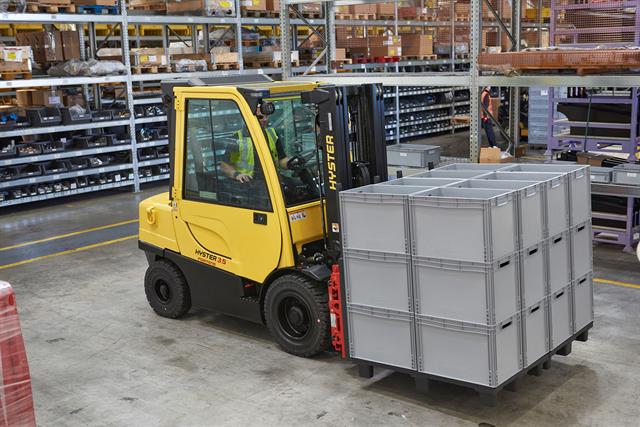 Paul Hinz |
Paul Hinz is marketing coordinator of Adaptalift, an Australian family-owned provider of forklifts, elevated work platforms, cleaning equipment, fleet management and telemetry systems.
Attachments transform the forklift from being able to simply lift and transport palletised goods to being able to pick up, dump and lift a wide variety of different-shaped loads safely and efficiently.
The large range of attachments available makes it imperative that relevant safety checks are carried out to ensure that the attachment is compatible with the forklift it is to be installed on and also fit for purpose to the application it must carry out.
Here are some common checks that can be carried out before purchase and operation of a forklift attachment to ensure safety and efficiency.
Is the attachment compatible with the forklift?When installing an attachment to a forklift, the unit's manufacturer-specified safe lift capacity is reduced to accommodate the attachment weight.
As such, before operations can commence, the forklift must be re-rated by the manufacturer to provide a new rating plate with the unit's revised safe lift capacity.
It is imperative that operators double-check any loads that they must lift and move with the attachment installed falls within the revised safe lift capacity.
If the load is heavier than the safe lift limit, then it must not be lifted for safety concerns and the potential to cause serious injury, or damage to product, the forklift or surrounding equipment.
 Make sure the attachment is fit for purpose |
Is the attachment fit for purpose?Forklift attachments are designed and built to handle specific tasks, eg. bin tippers or rotators are specifically designed to lift and rotate plastic bins used in industries such as agriculture and farming.
Trying to utilise a forklift attachment for a task it isn't specifically designed for puts operators and fellow employees at serious risk of injury.
An example of using a fit for purpose forklift attachment is if you need to use the forklift to lift up an employee to reach something at height, an appropriate man-up safety cage needs to be installed to safely complete the lift.
Using an improvised solution such as just standing on the forklift's tynes, pallet or an open box can result in serious injuries or fatalities.
It is imperative that any forklift attachment being purchased or utilised is fit for purpose and that no exceptions are made for convenience.
Can the attachment be safely attached to the forklift?To ensure the attachment is installed on the forklift tynes or carriage correctly, it is important to follow the manufacturer's or supplier's instructions.
When installing the attachment, make sure it is fastened securely before any lifting commences and regularly check the connection throughout a shift as repetitively lifting heavy loads may cause the connection to become loose overtime.
It is also important to check that, when installed, the attachment doesn't interfere with or negatively impact the operation of the forklift mast - including the chains.
When using a hydraulically controlled attachment, before work commences, all hydraulic oil levels and connections from the forklift to the attachment should also be checked as being safe and secure.
Has the operator been trained on how to properly use the attachment?A forklift attachment can be checked regularly, but most important is that the forklift operator is fully trained in its safe operation.
The addition of an attachment can significantly change a forklift's behaviour during operations, including handling and stability.
A properly qualified and trained operator is able to safely operate the attachment while also being aware of subtle changes in behaviour and respond accordingly in a safe and efficient manner to lower the risk of injury or accidents occurring.